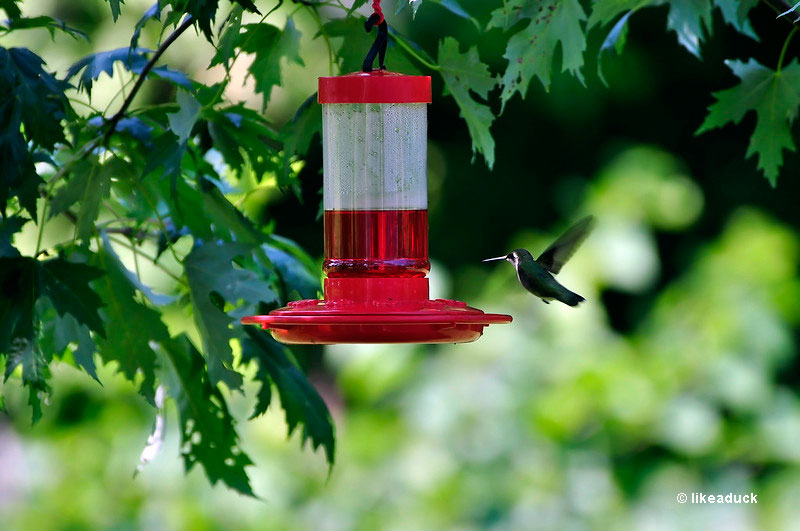
Hummingbird food is incredibly easy to make at home. It’s cheaper and safer for hummingbirds as opposed to some ready-made mixes, plus it’s so easy to make!
All you really need is sugar and water – but is it really that simple? Is there anything that could go wrong, and can you use substitutes?
On this page
Why Do Hummingbirds Need Our Help?
It’s wonderful having hummingbirds in the backyard, but do they really need our help? Don’t they have lots of wildflowers to feed on? While hummingbirds definitely feed from wild plants, they can also benefit from feeders.
As wild habitat is increasingly altered or destroyed, hummingbirds have less to eat. With that in mind, hummingbirds can use all the help we can give. Where trees have been cut down and other types of habitat destroyed, hummingbird feeders can provide the little birds with a vital food source.
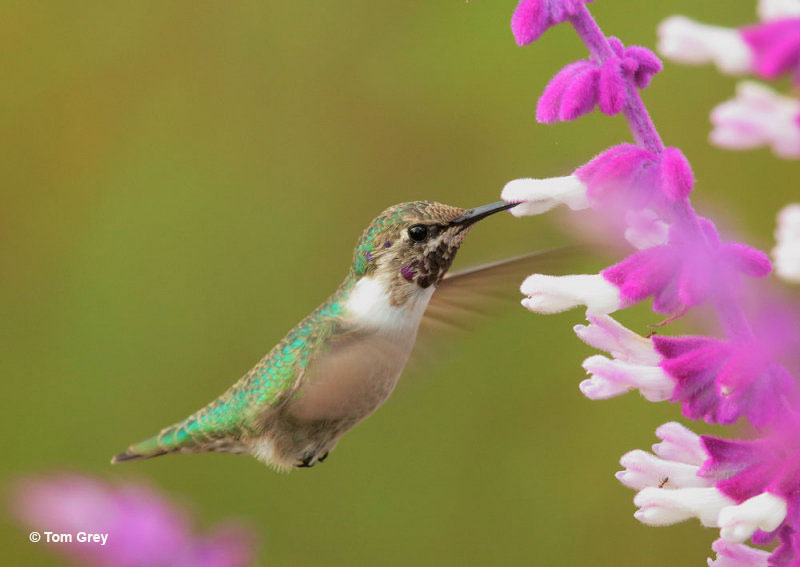
Hummingbirds get most of their energy from nectar, in the wild this comes from different flowers.
Place that feeder in a backyard with different tubular flowers that hummingbirds like (such as bee balm, honeysuckle, and salvia), and you’ll create a hummingbird oasis.
In particular, migratory hummingbird species can greatly benefit from feeders. During its incredible migration from eastern North America to Central America, the Ruby-throated Hummingbird needs a lot of food!
Related: When to put out hummingbird feeders?
Keep hummingbird feeders filled with hummingbird nectar during migration, and you’ll be giving those little birds a vital boost. Since they have to eat most of the time, you might even be saving some hummingbird lives!
Hummingbird feeders might be even more important for the Rufous Hummingbird. This long-distance migrant has declined and is sometimes considered to be Near Threatened.
DIY or Ready-Made Nectar?
DIY hummingbird food is easy to make, but what if you are camping, run out of sugar, or don’t have time to make the hummingbird nectar? If you can’t make hummingbird food, or just don’t feel like making it, no problem, you can use ready-made nectar!
Ready-made nectar is available as a concentrated liquid or a powder. Although the instructions on the package tell how to make it, usually, all you need to do is add water and stir.
Since that’s even easier than boiling water and adding sugar, why not just use the ready-made stuff? For the most part, the main drawback to using it is when ready-made nectar has red dye or other ingredients. If that’s the case, don’t use it at all!
Red dye can be harmful to hummingbirds and is unnecessary. Other additives aren’t needed either and might have negative effects on hummingbirds too.
When in doubt, the best option is to just make DIY hummingbird nectar.
DIY Recipe
The classic hummingbird food recipe is as simple as you can get. It consists of one part plain white sugar to four parts water and only requires something to hold the water as you boil it, and something else to stir it.
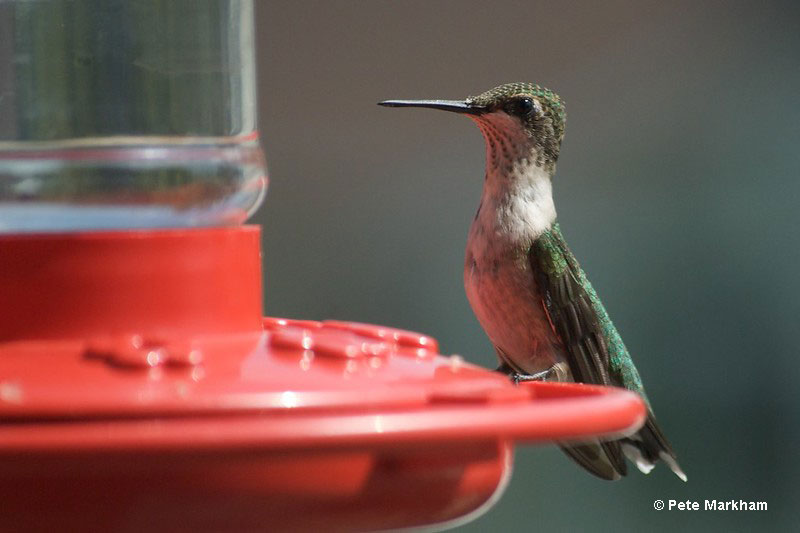
To start, measure out your water and put it to boil. After boiling, let the water cool, and then add the sugar. Stir the sugar around until it dissolves, let the mixture cool, and that’s it!
Fill your clean hummingbird feeder with the nectar, put it outside, and enjoy the hummingbirds that discover it. But what if you make too much hummingbird food? As long as you have a refrigerator, no problem!
You can store fresh hummingbird nectar in a fridge for a week to ten days. Just make sure to keep it in a clean container with a label that indicates when you made it.
Recipe Alterations
Now and then, people are tempted to experiment with hummingbird food ratio and other alterations. They wonder if hummingbirds might like honey or another sweet substance. At one point, a lot of people were also convinced that they should put red dye in their nectar!
Thanks to those experiments, we have learned that the best hummingbird nectar is just water and refined white sugar.
Although brown sugar might seem like the same thing, it’s not!
Brown sugar contains a bit of molasses and has a higher iron content than white sugar. These factors make it a terrible choice for hummingbird nectar. If hummingbirds drink it, this nectar can cause them serious harm!
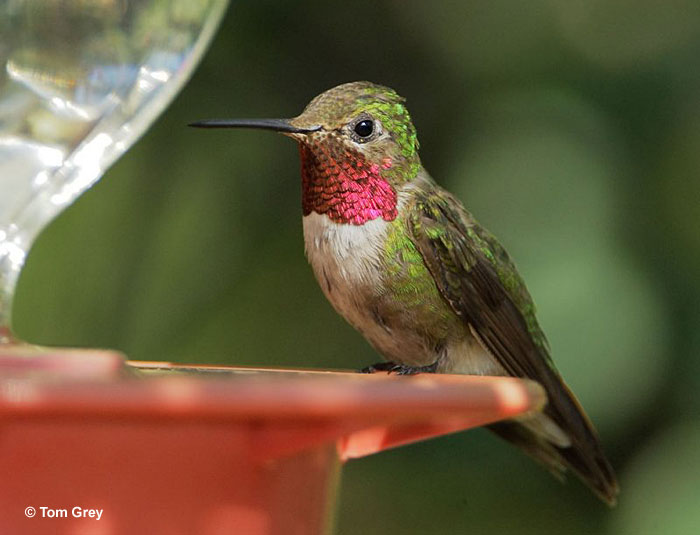
Honey might seem like a nice natural choice too but nope, it’s not good for hummingbirds. While they can drink it and like it, honey can grow fungus that harms hummingbirds. It can also hurt hummingbirds after it ferments.
As it turns out, red food coloring is a bad idea, too. This additive can harm hummingbirds in a number of ways and should always be avoided. It’s not needed either. While hummingbirds are attracted to red colors on feeders, they certainly don’t need their food to be red, too.
5 to 1 ratio
The classic 4 to 1 ratio is the most recommended hummingbird food recipe for a very good reason. This ratio of water to sugar is just like the sugar concentration found in natural flower nectar.
With that in mind, it’s not a good idea to use 5 to 1 ratio nectar. Since this reduces the amount of sugar, hummingbirds that drink it won’t be getting the energy they need.
Although some people believe this helps hummingbirds in very hot weather, instead, it’s better to use 4 to 1 ratio nectar while also providing the birds with a water feature.
3 to 1 ratio hummingbird food
Once again, it’s best to stick to using hummingbird nectar that is four parts water to one part sugar.
Although we might be tempted to give them some extra sugar, nectar with a 3 to 1 ratio can cause dehydration and might even affect their kidneys.
The only time a 3 to 1 ratio might be worth it is during cold or rainy weather. In cool conditions, hummingbirds do need more energy and that extra sugar can help. However, you shouldn’t feed them that ratio for more than a day.
Stay safe by going back to the 4 to 1 ratio.
2 to 1 hummingbird food
While 3 to 1 ratio hummingbird nectar can occasionally be used in cold weather, you should never add more sugar than that.
Under no circumstances should you feed hummingbirds with 2 to 1 nectar. I’m not even sure if hummingbirds would even drink that syrup but I do know that it would harm them. It’s just too concentrated for their systems and would certainly dehydrate the beautiful little birds.
Without boiling
Most hummingbird food recipes call for hot water water before adding the sugar. Since this ensures that you eliminate most bacteria and other germs, it’s a good idea. Boiling the water also makes it easier to dissolve the sugar.
However, you don’t actually need to boil water to make hummingbird nectar.
As long as you use clean water, and don’t mind waiting for the sugar to dissolve, you can use warm water, or even cool water to make that nectar.
Whether the hummingbird nectar is made with boiled water or not, it will become contaminated as soon as a hummingbird feeds from it. Both “types” of water will last around the same time in the feeder before going bad.
What Kinds of Feeders Do Hummingbirds Prefer?
Picking out the right hummingbird feeder is just as important as knowing how to make safe hummingbird nectar. Hummingbirds like any feeder where they can easily access hummingbird nectar.
We people, on the other hand, might also like feeders that look a certain way or have some other factors. To help hummingbirds discover a feeder, it’s worth using hummingbird feeders that have some red on them. Yellow helps too but red is the best color.
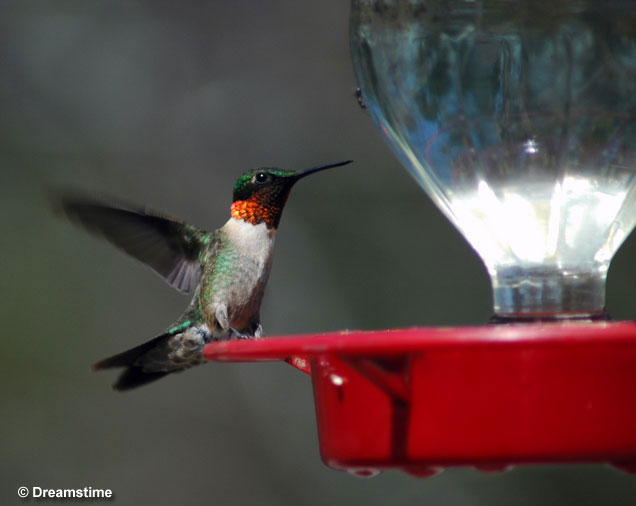
The best hummingbird feeders also have an ant moat. This is usually a shallow area of water on the edge of the feeder that prevents ants from getting into and ruining the nectar. Ant moats can also be small structures that keep the insects from walking down the chain that the feeder hangs from.
Read more: How to keep ants away from hummingbird feeders?
Good hummingbird feeders should also be easy to clean and maintain and should have at least four feeding ports. That way, more than one hummingbird can feed at the same time. If a lot of hummingbirds visit the backyard, you can also use hummingbird feeders with more ports.
Another consideration is feeder capacity. Feeders that hold 12 ounces are a good standard size and usually get emptied by the birds before you need to clean them.
How Often Should You Clean The Feeder?
No one wants to eat from a dirty plate. Birds are the same, and for them, drinking or eating from a dirty feeder could be fatal. This is especially true for hummingbirds. Sugar water isn’t just a good, energy-rich food for hummingbirds. It also works well for bacteria, yeast, mold, and fungus.
It can take several days for those germs to grow and officially contaminate a feeder, but they eventually will. That’s why should clean hummingbird feeders twice per week in hot weather, and at least once a week in cool temperatures.
If hummingbirds end up drinking all of the nectar in a day or two, clean it before you fill it again, even if that means cleaning it three or four times a week. Fortunately, hummingbird feeders are pretty easy to clean.
Taking the feeder apart and cleaning each piece with hot tap water will work. You can also use a weak vinegar solution but never use soap! It’s unnecessary and can leave substances that harm hummingbirds.
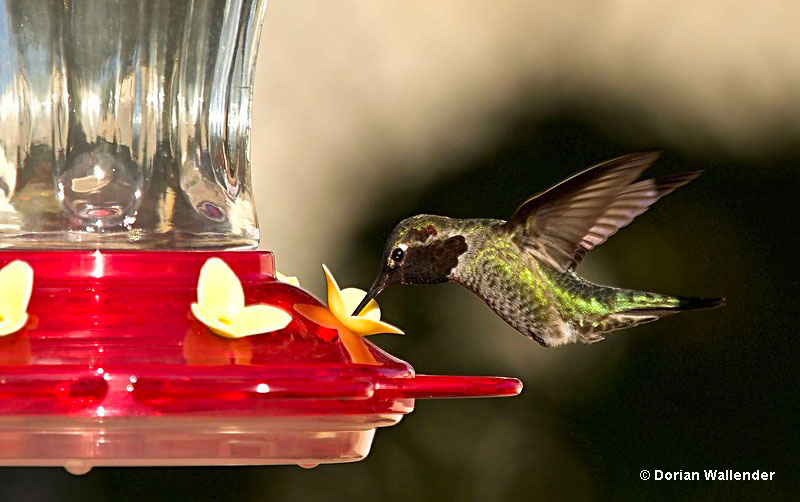
Some Tips To Keep In Mind
- Put the feeder at least five feet above the ground and within 10 or 12 feet of shrubs and foliage. This will help keep the birds out of reach of cats.
- Check your hummingbird feeders for leaks and replace them if needed. Leaking feeders attract wasps and ants instead of hummingbirds.
- Install the feeder in an area with at least some shade. If you leave it in the sun all day long, the nectar will go bad in a couple of days!
- Make sure to clean the feeder at least twice a week in hot weather, once per week in cool weather, and whenever you need to refill it.
- Only use a hummingbird nectar recipe that is four parts water to one part sugar, and uses clean water and plain, white, refined sugar.
- Include native plant species in the garden. Hummingbirds might feed from them too and will also eat the small insects they attract.
- Install a water feature too. Hummingbirds love to bathe, especially between bouts of delicious nectar at your hummingbird feeders.
Frequently Asked Questions
How to make hummingbird food without sugar?
You should not make hummingbird food without sugar. Substitutes such as flavored gelatin powder, corn syrup, honey, and other sweet substances either don’t provide hummingbirds with enough energy, or they cause serious health problems. It’s best to stay safe and only use white refined sugar.
What do hummingbirds love the most?
Hummingbirds love sugar water with a ratio of one cup sugar to four cups of water.
Should hummingbird nectar be red or clear?
Hummingbird nectar should always be clear. Never use red dyes because they can cause serious harm to hummingbirds.
How to store hummingbird nectar?
To store hummingbird nectar, put it in a clean container and keep it refrigerated for up to a week.
How long does hummingbird food stay fresh?
In a feeder, hummingbird food stays fresh for a few days (in hot weather), or a week. It can stay fresh in a fridge for a week.
Can you give hummingbirds juice?
No, you should not give hummingbirds juice. Juice does not have the right sugar-water ratio that hummingbirds require and can also have harmful additives.
Can sugar water be harmful to hummingbirds?
No, sugar water is not harmful to hummingbirds. This is the perfect food to give them, although only in a ratio of four parts water to one part sugar.
What kind of sugar can you use?
You can use refined sugar for hummingbird feeders. Brown sugar, honey and artificial sweeteners do more harm than good.
Do hummingbirds need salt?
No, hummingbirds do not need salt. They get all the salt and nutrients they need from tiny insects and natural nectar.

